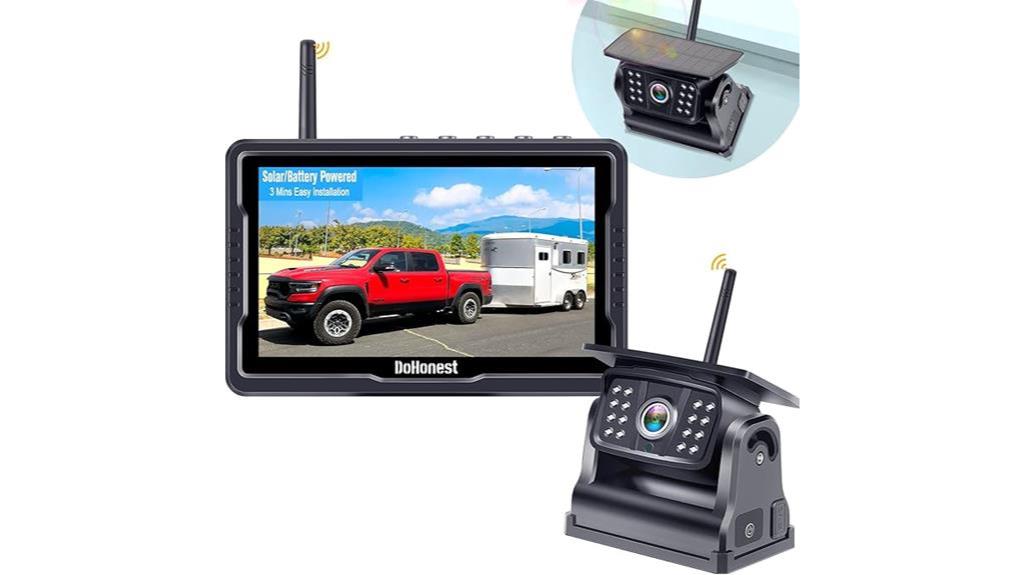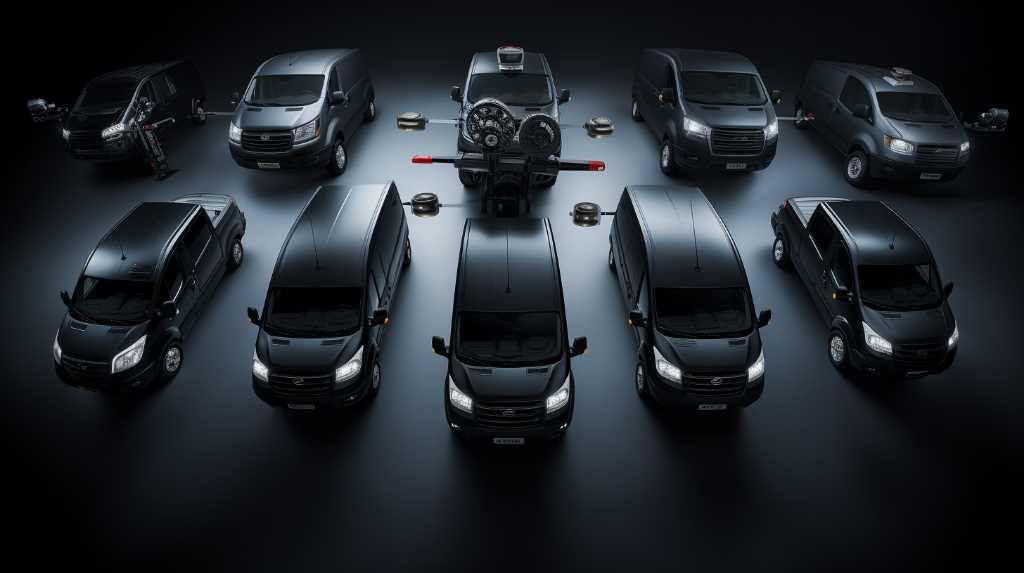Navigating the road of modern driving, you’ve decided to add an extra set of eyes to your vehicle with a dual cam backup system. It’s a smart move for safer maneuvering, but to truly master your ride, you need to unlock the potential of this tech-savvy co-pilot. You’ll learn how to seamlessly integrate the system into your car, ensuring it’s a perfect fit both in function and form. Get ahead with strategies for optimal camera placement and calibration tips that help avoid those deceptive blind spots. Maintenance must-knows will keep your system sharp, while advanced usage techniques give you an edge over the average driver. Dive into these top 8 tricks and transform your dual cam backup system from a simple gadget into a powerful driving ally.
Key Takeaways
- Dual camera backup systems provide a comprehensive view of what’s behind your car, minimizing blind spots and enhancing safety.
- Before upgrading to a dual cam backup system, ensure your vehicle’s make and model are compatible with the technology.
- Plan camera placement for the best view, with the rear camera centrally located above the license plate and the front camera behind or near the rearview mirror.
- After finding the ideal spots for your cameras, calibrate them for accurate functionality.
Understanding Dual Camera Systems
Dive into the functionality of dual camera backup systems to ensure you’re getting the most out of your vehicle’s safety features. These systems incorporate a pair of cameras, typically one in the rear and another with a wider angle or alternate positioning. They work together to give you a comprehensive view of what’s behind your car, minimizing blind spots and enhancing safety.
You’ll notice the difference when you’re backing up. The primary camera offers a direct view, while the secondary camera can supply a top-down perspective or a more extended field of vision. This dual approach allows you to spot obstacles and judge distances with greater accuracy.
It’s important to get familiar with the display interface. Usually, you’ll see a split-screen view with guidelines. These lines aren’t just for show; they represent the path your vehicle will take based on the current steering angle. Use them to navigate tight spots effortlessly.
Remember that while dual camera systems are a fantastic aid, they don’t replace the need for traditional vigilance. Always check your surroundings manually to cover all bases. With practice, you’ll harness the full potential of this technology and drive safer every day.
Assessing Vehicle Compatibility
Before upgrading to a dual cam backup system, you’ll need to ensure your vehicle’s make and model are compatible with the technology. Not all vehicles are equipped to handle the wiring and mounting requirements of dual cam systems. You’ve got to check if there are existing ports or if you might need an adapter. Some vehicles come with a pre-wired setup that’s practically begging for an upgrade, while others might demand a bit more elbow grease.
You should also consider the power supply. Most backup cameras are designed to connect to your vehicle’s reverse light power, so they automatically turn on when you shift into reverse. However, dual cam systems often require a constant power source to operate the front camera and additional features, like parking monitoring.
Don’t forget about the display either. If your car doesn’t have a built-in screen, you’ll need a system that includes a monitor or one that can link to a mobile device. Some newer models might even integrate with your car’s existing infotainment system.
Before you dive in, take the time to consult your vehicle’s manual or reach out to the manufacturer. They can provide valuable insights into what’s possible and help you avoid any costly missteps.
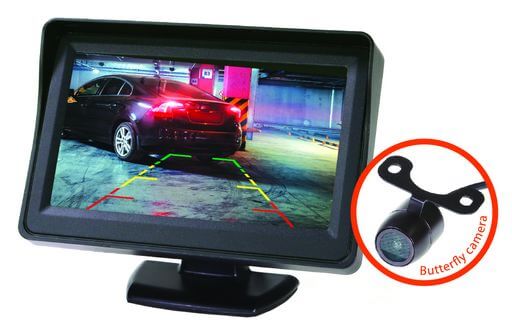
Planning Installation and Wiring
Before you start hooking up your new dual cam backup system, you’ll need to plan your approach carefully. You’ve got to figure out where to place your cameras for the best view, and understand the wiring practices that’ll save you headaches later on. Let’s look at the key steps to ensure a smooth installation and reliable operation of your system.
Optimal Camera Placement
You’ll maximize your dual cam backup system’s effectiveness by strategically planning where to place and how to wire your cameras. For the rear camera, aim for a central location above your license plate, ensuring a clear, wide view without obstructions. Keep it high enough to avoid dirt and grime but within reach for maintenance. The front camera should sit behind or near your rearview mirror to minimize distraction and provide an optimal road view.
Carefully route wires away from moving parts and heat sources. Use cable clips to secure them along the car’s body, hiding them under trim panels or carpeting to maintain your vehicle’s aesthetics. Remember, proper placement and discreet wiring are key to a seamless and functional dual cam backup system.
Wiring Best Practices
When planning your dual cam backup system’s installation, it’s crucial to map out the wiring route beforehand to avoid electrical interference and potential hazards. Stick to using high-quality, automotive-grade wires that can withstand temperature fluctuations and vibrations. Ensure you’re connecting the wires correctly – positive to positive and negative to negative – to prevent any short circuits.
Always run wires along the interior trim, securing them with clips or adhesive mounts to avoid damage and maintain a clean look. Be especially careful to avoid the steering column and airbag wiring, as interference with these systems can be dangerous. Finally, protect your connections with heat shrink tubing or electrical tape to keep them insulated and safe from the elements. With these best practices, you’ll ensure a reliable and professional-quality installation.
Optimal Camera Placement Strategies
Camera positioning is crucial to maximizing your dual cam backup system’s effectiveness. You’ll want to ensure your rear camera’s unobstructed, ideally mounted just above the license plate for a clear, wide view. This spot minimizes blind spots and gives you the best vantage point for reversing. It’s also essential to angle the camera downward slightly to capture the bumper and immediate ground behind your vehicle—you’ll need this perspective for precise maneuvering.
For the front camera, mount it centered on your dashboard or windshield. Here, you’re aiming for the broadest possible scene without the hood of your car taking up too much space in the frame. This position helps you judge distances when parking or navigating tight spots.
Remember to consider the height of your vehicle. Trucks and SUVs may require higher mounting points to avoid a sky-heavy view that could miss potential obstacles closer to the ground.
Calibration for Accurate Functionality
After finding the ideal spots for your cameras, you’ll need to calibrate them for accurate functionality to ensure the system’s precision. Calibration is the process of setting your cameras to interpret distances and angles correctly, a step that’s crucial for avoiding false readings and ensuring your safety on the road.
Start by following the manufacturer’s instructions, which typically involve marking specific distances behind your vehicle. These marks are used as reference points for the system to understand what it’s ‘seeing’. You might need to adjust the camera angles to capture the necessary field of view properly.
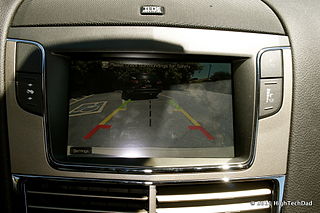
Next, use the system’s software to align the camera’s output with these reference points. This might involve adjusting guidelines on the display or entering measurements. Make sure the camera’s view is level and not skewed, as this can distort the perception of depth and distance.
Maintenance and Troubleshooting
Regular checks of your system’s wiring and camera lenses can prevent common issues before they escalate. Dirt and debris on lenses can degrade video quality, so clean them gently with a microfiber cloth. Also, look for signs of wear or damage on the wiring, as exposed cables can lead to malfunctions.
If you’re experiencing glitches or the system isn’t powering up, first ensure all connections are secure. It’s often just a loose wire or a blown fuse that’s easily replaced. For persistent problems, refer to the user manual’s troubleshooting section; manufacturers typically provide a list of common issues and solutions.
You should also update your system’s software regularly. Manufacturers may release updates to improve performance or fix bugs. If you’re unsure how to update the system, check the user guide or the manufacturer’s website for instructions.
Lastly, don’t ignore any error messages on the display. They’re clues to what’s going wrong. If you can’t resolve the error with the manual’s help, contact customer support. They’ll guide you through more complex troubleshooting steps or advise if a professional repair is needed. Remember, timely maintenance can save you from headaches and costly repairs down the road.
Enhancing Your System
To further improve your dual cam backup system’s performance, consider integrating additional features and accessories that enhance its functionality and user experience. You’ll want to look for options that not only make your system more robust but also easier to use.
Firstly, think about upgrading your cameras to ones with higher resolution. This’ll give you crisper images, making it simpler to spot obstacles. If you’re often driving in low-light conditions, cameras with night vision capabilities are a must-have. They’ll provide clear footage, even in the dark.
Adding sensors that alert you to potential hazards can be a game-changer. These will work in tandem with your cameras, giving you auditory signals if you’re too close to an object, taking the guesswork out of reversing.
Consider a system that allows for recording. If you’re ever in an incident, having footage can be invaluable for insurance claims or legal purposes. Make sure the system has ample storage or loop recording to keep the footage up to date.
Lastly, ensure your system’s monitor is mounted in a spot that’s both comfortable for viewing and doesn’t obstruct your view of the road. A well-placed screen helps you make quick, informed decisions without strain or distraction.
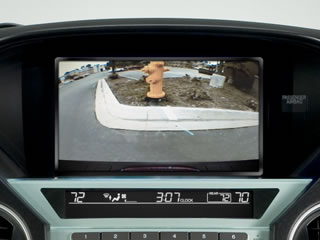
Advanced Usage Techniques
Now that you’ve upgraded your backup system, let’s dive into advanced techniques to maximize its potential and make reversing safer and more efficient. First, familiarize yourself with the system’s zoom feature. Use it to focus on obstacles that are usually hard to see. You can get a better sense of how close you are to hitting something, which can be especially useful in tight spots.
Next, learn to switch between camera views seamlessly. Your dual cam system likely allows you to view both rear and bird’s-eye perspectives. Practice toggling between these during different stages of your reverse maneuver to build a comprehensive spatial awareness.
Don’t just rely on the camera; use it in conjunction with your mirrors for a full picture of your surroundings. While cameras provide a clear view directly behind you, your side mirrors can catch what might slip past the camera’s field of vision.
Lastly, adjust the camera settings according to the time of day. At night, ensure the night vision or low-light feature is activated for clear visibility. During the day, you might want to change the brightness or contrast to combat glare. Mastering these settings will keep your view crisp and unobstructed, no matter the conditions.
Frequently Asked Questions
Can Dual Cam Backup Systems Be Integrated With Smartphone Apps for Remote Viewing and Control?
Yes, you can integrate dual cam backup systems with smartphone apps for remote viewing and control, making it easy to monitor and manage your vehicle’s surroundings from your phone.
How Does Extreme Weather Affect the Longevity and Performance of Dual Cam Backup Systems?
Extreme weather can shorten your dual cam backup system’s lifespan and hinder its performance by causing fogging, freezing, or overheating, which affects camera clarity and sensor reliability. Protect it with weatherproof casing.
Are There Privacy Concerns Related to Using Dual Cam Backup Systems, and How Can They Be Mitigated?
You should consider privacy concerns with dual cam systems, like unintentional recording. Mitigate risks by setting strict storage protocols and informing passengers about active cameras to ensure their privacy is respected.
What Is the Impact of Dual Cam Backup Systems on Car Insurance Premiums?
You might see a decrease in your car insurance premiums with dual cam backup systems installed, as they can provide evidence in accidents and encourage safer driving habits.
Can Dual Cam Backup Systems Record Audio, and Is It Legal to Do so in All Jurisdictions?
Yes, dual cam backup systems can record audio, but it’s not legal everywhere. You’ll need to check your local laws to ensure you’re not violating any privacy regulations by recording conversations.
Conclusion
You’ve got the know-how to make the most of your dual cam backup system now. Ensure it’s always compatible with your ride, place the cameras strategically, and calibrate carefully. Keep up with maintenance and know how to troubleshoot. Boost your system’s performance when you can, and don’t shy away from advanced techniques. Your rides are safer and smoother, so take pride in mastering this tech. It’s all about confidence on the road—enjoy the ride!
Related Articles
Be sure to also check out these articles right here at Motion Performance Motorsports
The Complete Buyers Guide for Backup Cameras
Next Backup Camera Article: Step-by-Step Guide to DIY Backup Camera Setup
Previous backup Camera Article: Why Choose Integrated Backup Camera Systems for Smartphones?

Hey there, I’m Terra Frank, the driving force behind Motion Performance Motor Sports. I’m thrilled to have you here, exploring the fascinating world of cars, trucks, and everything related to automotive performance and accessories.



